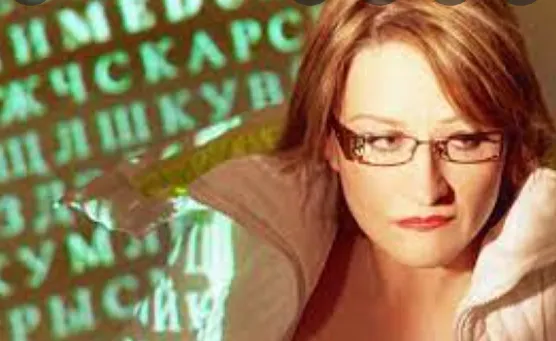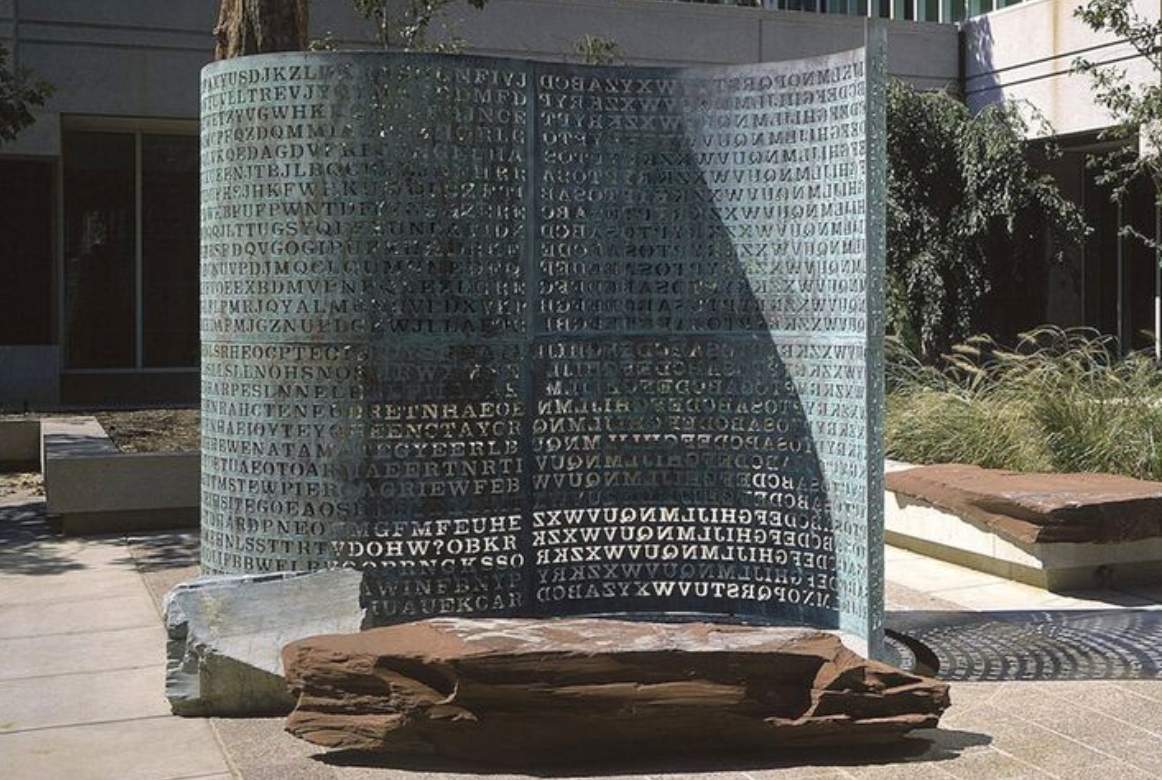From U-2 Spy Planes to Gaming, Elonka Dunin Faces Her Biggest Challenges Yet
Celebrity cryptographer Elonka Dunin is so well known that Da Vinci Code author Dan Brown named a character, Nola Kaye, after her in an anagram pattern for his sequel The Lost Symbol.
Even though Elonka has no formal training, the daughter of a Polish mathematician and NASA engineer was always a hard-core gamer destined for code-breaking. She was born in Santa Monica, California in 1958 and dropped out of UCLA astronomy studies to join the US Air Force. Elonka worked on instruments for spy planes like the SR-71 Blackbird and U-2 but never really felt electronics was her calling.
Dunin returned to her love of online gaming instead, moving to St. Louis where she oversaw Simutronics games including GemStone III, Alliance of Heroes, CyberStrike, Modus Operandi, DragonRealms, HeroEngine, and Tiny Heroes. That’s when a hacker group released PhreakNIC v3.0 Code, an amateur cryptographic puzzle, and Elonka’s entire world changed in mid-1999.
Through hacker connections, she heard about the unsolved code and there was no turning back. “The gamer in me got hooked,” Elonka said.

"The brand new social experience where you activate your gaming skills as you train like a spy."
- TimeOut
Take on thrilling, high-energy espionage challenges across different game zones.

Elonka Dunin, celebrity cryptographer
When Elonka wasn’t working or exploring the world - she sailed around Antarctica on a former Soviet spy ship - she was speaking at conventions like Dragon*Con and hanging out with hackers.
When she finally found time to work on PhreakNIC in 2000, Elonka cracked it in 10 days and wrote about it on her website with in-jokes about cryptography, hacker culture, and sci-fi movies. That led to invites to sit on hacking panels at Dragon*Con and one thing led to another. Before long, Elonka was addressing spies at the 2005 National Security Agency (NSA) Cryptologic History Symposium.
“People were asking me, ‘How did you get so good at this?’ And I don’t know, exactly,” she said during her 2021 Ted Talk. “I’m tenacious. When I get hold of something - a challenge - I just kind of grab onto it and I won’t let go.”

The NSA’s go-to codebreaker?
Before long, the NSA’s National Cryptologic Museum contacted her and Elonka was soon devising codes for the museum to embed into its walls. “And then September 11th happened,” she said. “Which put everything else on hold.”
While visiting a cousin and paying her respects at the Pentagon memorial in Washington, D.C., Elonka decided she also wanted to visit the CIA complex in Langley, Virginia - home to thousands of spies and the encrypted Kryptos sculpture designed by artist Jim Sanborn.
Since 1991, Kryptos and its embedded code have confounded the world’s top brains. Only three of its four panels have been solved. Elonka desperately wanted to unravel the mystery but she’d have to wait. The armed CIA guards said she’d only be allowed in on official business. “We reluctantly turned away. But the ‘official business’ puzzle kept turning over in my mind…”

Deciphering the Kryptos sculpture
Separately, Elonka wondered if she could use cryptographic research to help in the war on terrorism - a bit like the civilians who helped crack the Enigma ciphers at Bletchley Park during WWII. She called her local FBI office and discussed ‘steganography’, the practice of concealing information within another message or physical objects such as a computer file, message, image, or video.
There were rumors that al-Qaeda used steganography and the FBI wanted Elonka to address a task force meeting. “My own conclusion was that I didn't believe that al-Qaeda had used ‘stego’, but they had used other methods of communication, and I went over those as well,” she recalled. “The talk was a hit.”
In future presentations, Elonka slyly started inserting a photo of Kryptos in her lecture slides and dropping hints that she’d like to give her presentation to the CIA one day. She soon had a nibble. Someone from Langley thought they could get her in on ‘official business’. Elonka was one step closer to seeing Kryptos close up.
“They wouldn't let me take pictures, but I asked for and received permission to do some rubbings of the sculpture,” Elonka said. She shared them on a website she created for other Kryptos fans. “Little did I know that that one page was going to change my life.”
Kryptos conspiracy theorist
Mail poured in from around the world with people claiming to have found the solution to the fourth, unsolved Krystos panel. “I'd usually just find schizophrenic delusions. Like claims that Kryptos proved the existence of aliens, or a secret conspiracy on Easter Island, stuff like that. So I'd file those away, and move on. But every so often I'd get a ‘real’ question, like, ‘Who made Kryptos? What else has that artist done?’"
Elonka dug up the answers and added them to her website. Eventually, her work led to contact with Jim Sanborn himself, who loaned her photos to keep her website updated. The website led to an online discussion group that attracted cryptographers, hackers, and hundreds of millions of viewers.
“Dan Brown himself actually contacted me to ask me about Kryptos, since it was going to feature in another novel he was working on,” she said. “It was released in late 2009, The Lost Symbol, and to my surprise, he'd actually named a character after me in the book!”

Elonka Dunin & the elusive Kryptos answer
Two decades after her encounter with Kryptos, Elonka is still searching down rabbit holes for the answer to the sculpture’s embedded puzzle. Three of the four panels have been solved but the fourth remains illusive.
"Yeah," Dunin told Eurogamer. "You go down a direction and you say, 'Does this lead anywhere? No? Okay, let's start again. Does this lead anywhere? Oh, wait, that first thing that I thought didn't lead anywhere actually did lead somewhere. I just turned at the wrong junction.' That's a lot of solving codes. It's moving Scrabble tiles around. It's just trying lots of different things and seeing if anything emerges."
"Some people ask me if I want to be the one to solve Kryptos," she continues. "I just want to see it solved. I want it off my plate. If I can help toward the solution process by sharing as much information as possible, great. Absolutely fantastic. I would love to see it solved in my lifetime."
Dunin told SPYSCAPE that thousands of people are working on finding a solution to the Kryptos mystery. "Some more intensely than others," she said. "There has been nothing new since the latest EAST hint."
SPYSCAPE+

Join now to get True Spies episodes early and ad-free every week, plus subscriber-only Debriefs and Q&As to bring you closer to your favorite spies and stories from the show. You’ll also get our exclusive series The Razumov Files and The Great James Bond Car Robbery!


Gadgets & Gifts
Explore a world of secrets together. Navigate through interactive exhibits and missions to discover your spy roles.
Your Spy Skills
We all have valuable spy skills - your mission is to discover yours. See if you have what it takes to be a secret agent, with our authentic spy skills evaluation* developed by a former Head of Training at British Intelligence. It's FREE so share & compare with friends now!
* Find more information about the scientific methods behind the evaluation here.


Stay Connected
Follow us for the latest
TIKTOK
INSTAGRAM
X
FACEBOOK
YOUTUBE